Layers & Depth Matrix: A Development Process
DESIGN GUIDE
3 min read
The Depth & Layers document is something I created to help me prioritize content in a game. It's been a great success on every of my projects, and has received a lot of adoption everytime I introduced it to other people as well.
FUNCTION & ADVANTAGES :
Allows to visualize a map of all features in the game organized by importance
Fast, easy & intuitive.
Great reference throughout production to manage the priority of new ideas.
Example 1: DUNE AAA
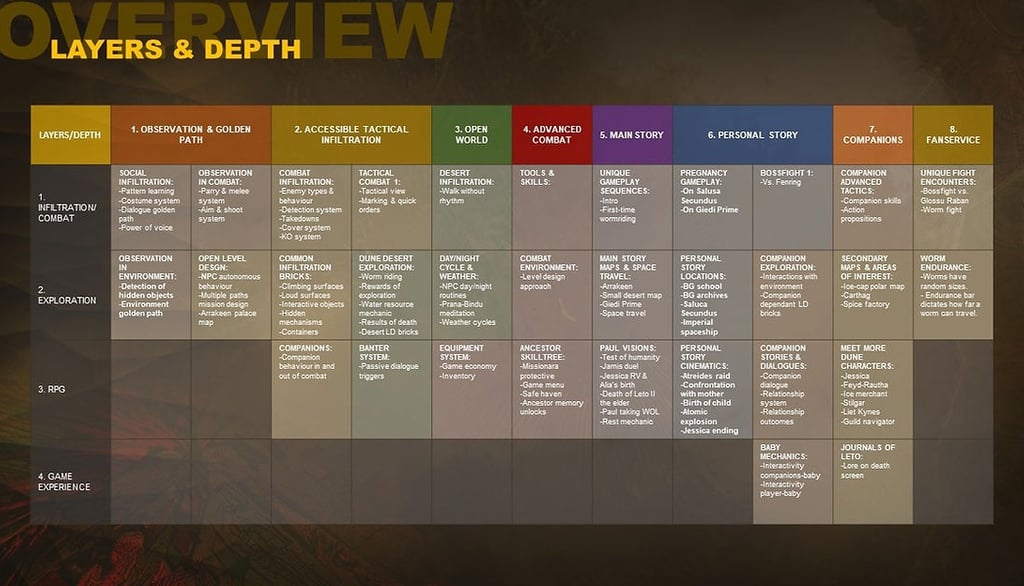

Example 2: PROJECT TASS

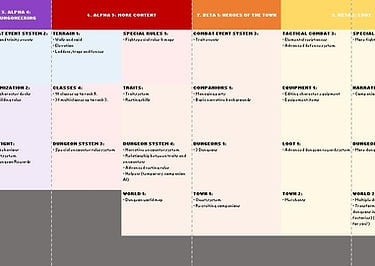
HOW IT WORKS:
1. Identify the layers, or pillars, of your game. Rank them in a column by order of importance.


2. Create a list of feature blocs. All features in the game are grouped by dependencies/subject. It doesn't matter much how long & difficult each one is to make.
3. Distribute all feature blocs in their respective layer, arranged in lines, in order of importance.
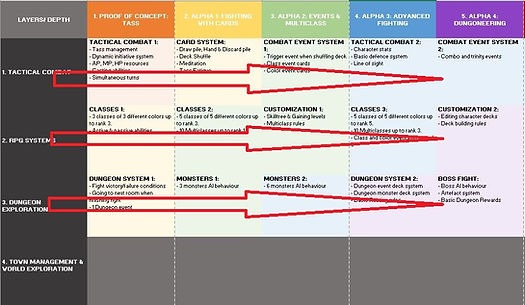

4. The result should look like this: all the CORE features of your game are in the top left corner. All the nice-to-have features of your game are in the lower right corner.
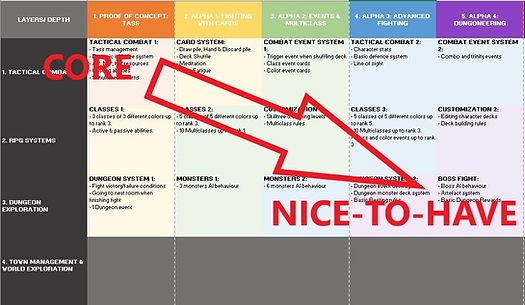

5. Now identify steps of production by grouping blocs of features together in vertical slices. The point is that stopping production at any of these steps should leave you with a fun to play, self-reliant, functional product.
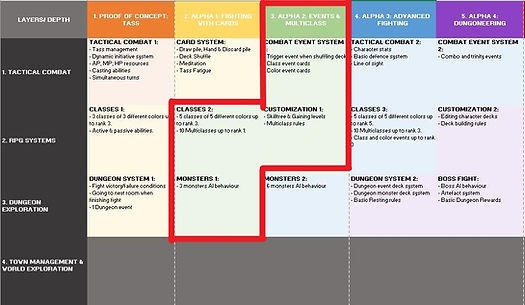

6. In production, if a step is finished, and the game doesn't feel fun or functional, then there is no point in continuing to the next step. In other words, if your core systems are not enough to carry a game, there is no point building a game around them. They need more work and polish. Once a step is truly complete and functional, then you shouldn't need to work on it any more until you add an other step around it, like an onion !
USING IT & BEST PRACTICES:
Take it out as reference when two people are arguing about adding something to the game. I've seen hour-long arguments be resolved in a few minutes, if not immediately, after referencing the layers&depth document.
Best done early in development, just after the initial brainstorming, as soon as the main systems & events have been identified.
Works best for features on the scale of the entire game, but can really work for anything on any scale, including art and programmation (which will be interconnected with the design layers&depth).
I hope this process can become useful to you, as it is to myself and other people I've already introduced it to.
Thank you for reading !
Connect
Let's collaborate on your next game design project:
damien.f.rodriguez@gmail.com
© 2025. All rights reserved.